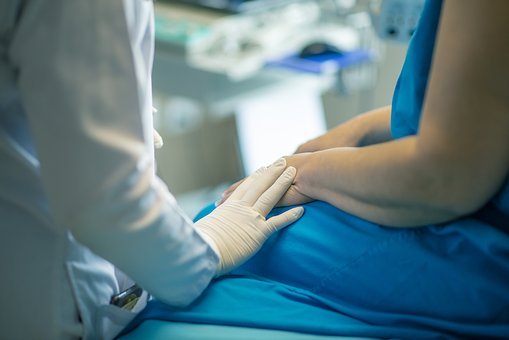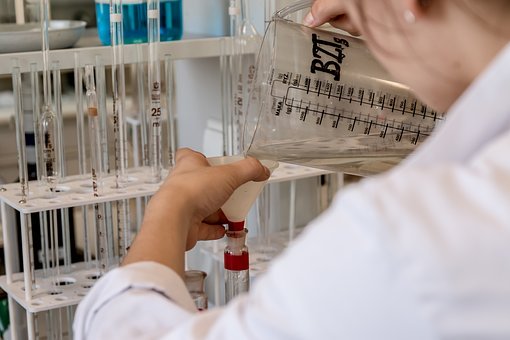Endometriosis: Types, Causes, Symptoms, Diagnosis, Prevention and Treatments
Under normal circumstances, the endometrium covers the uterine cavity surface. If the endometrium grows in other parts of the body due to some factors, it can become endometriosis. This kind of ectopic endometrium not only has glands of endometrium in histology but also is surrounded by endometrial stroma.
There are obvious changes in function with the level of estrogen, that is, with the menstrual cycle, but only part of the pregnancy hormone can produce a small amount of "menstruation" and cause a variety of clinical phenomena.

The common types of endometriosis are:
1. Peritoneal endodermis
Ectopic endometrium is implanted in the visceral peritoneum, abdominal peritoneum, pelvic peritoneum, etc.
The ectopic endometrium is planted on the surface of the ovary to form a scattered nodule, or it is planted in the interior of the ovary to form an ovarian cyst. Because the inside of the cyst is old blood, similar to melted chocolate, it is called a chocolate cyst. Endometriosis in the ovary is the most common type, and it can occur in unilateral or bilateral ovaries. The small ones are several millimeters in size, and the large ones are even more than ten millimeters.
3. Deep infiltrating endometriosis(DIE)
The endometriosis is deeply infiltrated; the general infiltrating depth is ≥ 5mm, which is common in the uterosacral ligament, the uterosacral fossa, the vaginal vault, the genital rectal septum, etc.
4. Endometriosis in other parts
It includes endometriosis in the digestion, urinary system, respiratory system, perineum wound, abdominal wound, breast, navel, and other parts.

Modern medical research has the following five views on this disease:
During the menstrual period, the endometrial fragments that fall off enter the abdominal cavity through the fallopian tube with the counter flow of blood, and are planted in the ovary and adjacent pelvic peritoneum, and then grow and spread, and develop into endometriosis.
2. Theory of lymphatic and venous dissemination
The presence of endometrial tissue in pelvic veins or lymph nodes supports this argument. It is suggested that endometriosis in organs far away from the pelvic cavity, such as the skin and muscles of the lungs, hands, and thighs, maybe the result of lymphatic or venous dissemination.
The germinal epithelium, pelvic peritoneum and pleura of the ovary all originate from the lymphatic and venous dissemination of the coelomic epithelium. They can be transformed into endometrioid tissue and cause endometriosis by repeated stimulation of menstrual blood, hormone, or chronic inflammation.
4. Immunology
In 1980, weed et al. reported that there were lymphocytes, plasma cell infiltration around the ectopic endometrium, hemosiderin deposition in macrophages, and fibrosis in varying degrees. They believed that the ectopic endometrium lesions as foreign bodies activated the immune system of the body.
Since then, many scholars have explored the etiology and pathogenesis of endometriosis from the aspects of cellular immunity and humoral immunity. It has also been reported that patients with endometriosis who have a history of lupus erythematosus or other autoimmune diseases are twice as likely as those without endometriosis.
In the first generation of endometriosis patients (female), the patients with the same disease were significantly higher than those in the control group, but there was no specific HLA antigen associated with the disease.

1. Dysmenorrhea
It is a pain caused by pathological changes caused by the shedding and accumulation of endometriosis.
2. Menorrhagia
Internal endometriosis, the amount of menstruation is often increased, menstruation is prolonged. It may be caused by the increase of endometrium, but it is often accompanied by ovarian dysfunction.
3. Infertility
The cause and effect of infertility and endometriosis are still controversial. Pelvic endometriosis can often cause adhesion around the fallopian tube, affect oocyte collection or lead to blocked fallopian tubes, and pathological ovarian changes can affect the normal progress of ovulation, then leading to infertility.
However, it is also believed that long-term infertility and open menstrual period can offer the opportunity of endometriosis; once women are pregnant, the ectopic endometrium is inhibited and atrophied.
4. Painful sex
Endometriosis, which occurs in the uterine rectum fossa and vaginal rectum septum, causes swelling of surrounding tissues and affects sexual life and increases the sex sensitivity in the premenstrual period.
5. Rectal tenesmus
Generally, it occurs in the premenstrual period or after menstruation, when the patient feels excrement passing through the rectum, the pain is unbearable, but at other times, there is no such feeling, which is a typical symptom of endometriosis near the uterine rectum fossa and rectum. Occasionally, if the ectopic endometrium reaches to the rectal mucosa, there will be rectal bleeding during menstruation.
6. Bladder symptoms
It is often seen in patients with endometriosis in the bladder, with periodic urination frequency and pain; when it invades bladder mucosa, periodic hematuria can occur.
Diagnosis

1. Imaging examination
B-ultrasonography is an important method for the diagnosis of ovarian cyst, bladder, and rectal endometriosis, which can determine the location, size, and shape of the cyst. CT and MRI are valuable in the diagnosis of pelvic endometriosis, but they are expensive, so they are not recommended as the first choice.
2. Determination of serum CA125
CA125 is a glycoprotein, the serum CA125 level in patients with endometriosis may be higher than that in patients with severe endometriosis, but due to the wide range of changes, it is mostly used in patients with severe endometriosis and suspected deep endometriosis.
3. Laparoscopy
It is the best way to diagnose endometriosis. The diagnosis can be made by laparoscopic examination of obvious or suspicious lesions. The clinical-stage of endometriosis can only be determined by laparoscopy or laparotomy.
4. X-ray examination
It is also an important method for the diagnosis of endometriosis. It can be used for pelvic air inflation, pelvic air inflation, and hysterosalpingography alone.
Treatment
Before treatment, the diagnosis should be made as clear as possible, the age of the patients should be considered, and the fertility requirements, the severity of the disease, the symptoms, and the scope of the focus should be fully considered.
1. Hormone therapy
Hormone therapy is often the doctor's first choice because the development of endometriosis is controlled by estrogen. Drugs are used to counteract or inhibit the periodic endocrine stimulation of ovary. At first, testosterone was used, which had more side effects and less efficacy, so it was gradually abandoned. Later, it gradually developed into pseudo pregnancy therapy and pseudo menopause therapy.
Hormones do control the disease, but they can't cure it. A 2016 Danish study found that women who took hormonal contraceptives were more likely to go to the hospital for depression.

2. Surgical treatment
It is mainly aimed at those who are ineffective in drug treatment or whose reproductive function is not recovered, and the most common ones are conservative operation and laparoscopic operation.
It is generally believed that the chocolate cyst on the ovary is usually large in volume, or the endometriosis nodule in other parts, whose volume is more than 2cm in diameter, which is not suitable for drug control but needs surgical treatment. If the use of drugs for six months or even a year has no effect, surgery should also be considered.
3. Radiotherapy
Radiotherapy has been used in endometriosis for many years, but it has achieved a high curative effect by using many kinds of drugs and operations and generally does not damage the ovarian function. The role of radiotherapy in endometriosis is to destroy the ovarian tissue, so as to eliminate the influence of ovarian hormones, make the endometrium atrophic, and achieve the purpose of treatment.
4. Assisted reproductive technology
If the patient is not successful or the patient is older, the fallopian tube has obvious pathological changes and obstruction and has to remove the ovary or uterus in order to give birth, and ART has become the main choice for people to successfully conceive their baby.
5. TCM Treatment
Traditional Chinese medicine believes that blood stasis is the key to the disease, and the treatment principle is mainly to promote blood circulation and remove blood stasis. And herbal medicine Fuyan Pill is one of the representatives of the herbal medicines.
In the formula of Fuyan Pill, there are more than 50 ingredients of traditional Chinese medicine, such as bupleurum, Poria, Scutellaria, Atractylodes, yam, safflower, peach kernel, honeysuckle, and cowherb seed. Fuyan Pill not only can effectively kill all kinds of bacteria, viruses, and pathogens, turn mycoplasma, chlamydia, and gonorrhea to negative, eliminate inflammation, but also can effectively clear the focus.
The herbal ingredients in the formula, such as safflower and peach kernel, which has the effect of promoting blood circulation and relieving pain, can effectively relieve the pain in patients with endometriosis; and Poria, Atractylodes, and yam can improve abnormal discharge and irregular periods.
Therefore, Fuyan Pill can not only treat endometriosis but also help patients improve immunity, so as to achieve the effect of eliminating diseased focus and preventing recurrences.
Why Do You Miscarry More Often? Endometriosis May Be the Answer
previous pageCauses of Endometriosis
next page
You may also be interested in
- Herbal Treatment for Adenomyosis with Large Uterine Enlargement and Heavy Bleeding
- Endometriosis and Debilitating Bowel & Bladder Pain: Diagnosis, Treatments, and Hope for Relief
- Struggling with Endometriosis Symptoms? Proven Back Pain and Painful Sex Relief Options
- Severe Endometriosis Treatment: Chronic Pelvic Pain Relief and Infertility Solutions
- Managing Adenomyosis: Easing Pelvic Pain and Heavy Menstrual Bleeding with Natural Approaches
Testimonials
- Adenomyosis with Ureaplasma Urealyticum Cured by Fuyan Pill
- Tubal blockage with hydrosalpinx can be cured by TCM shortly
- Fuyan Pill Helps A woman with Adenomyosis Get Pregnant
- A Woman with Hydrosalpinx Is Cured with Fuyan pill
- Pelvic Inflammatory Disease Testimonials
- Irregular Vaginal Bleeding and Endometrial Thickening Cured by Fuyan Pill
- Pruritus Vulvae and Frequent Urination: Mycoplasma Infection Cured after 2 Courses



